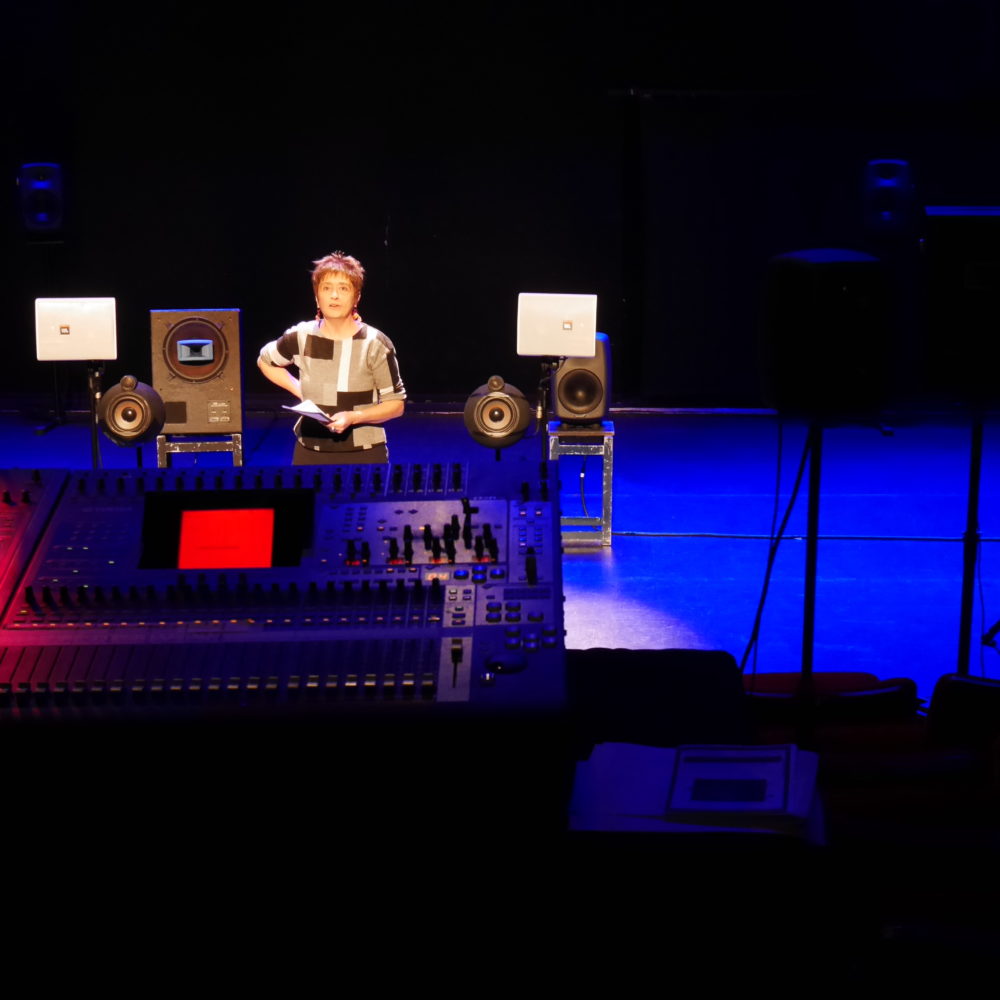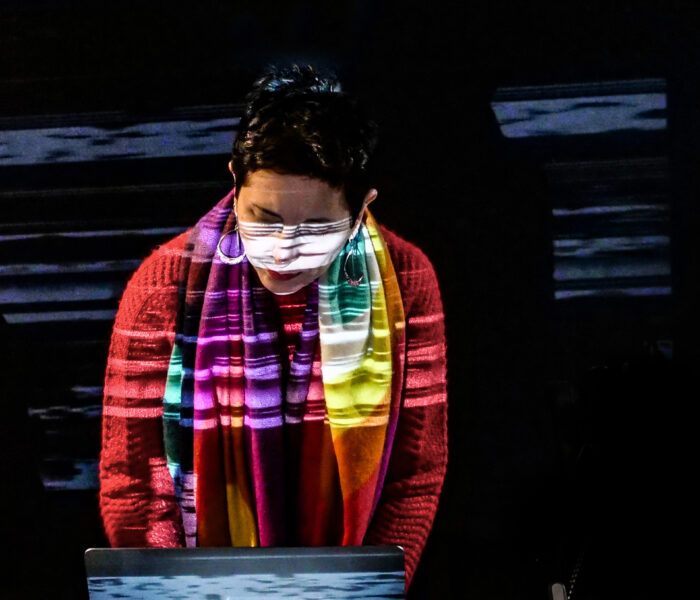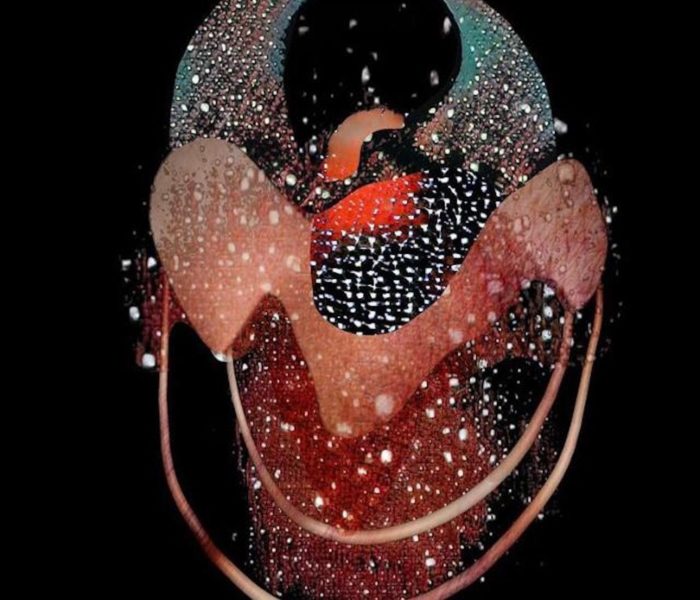She is active in the creative field, committed to women's rights and resourceful in bringing new musical projects to life.
Lucie Prod'homme is a composer, teaches composition at the Conservatoire à Rayonnement Régional de Perpignan and campaigns for access to the world of sounds for all, through electroacoustic music.
This is evidenced by the Quissons series, funny little beings imagined by a group of musicians, whose existence she tells us more in detail: a very interesting story now available for listening on Soundcloud
There are Padson Quissons who are deaf or rather hard of hearing and Toutouïe Quissons who dare to hear everything. Yes.
How was the Quissons ?
I was in Marseille at the time, teaching electroacoustics at the MIM (Musique et Informatique de Marseille). With some of my students, I had the idea of founding an association, the Acousmonautes (1), to set up projects and ensure their dissemination. We were looking for atypical places where we could reach audiences other than the usual concert halls. But it was thanks to Radio-Grenouille, a free radio station in Marseille, that the Quissons radio project was born, a "history of the ear" conceived in good humour, like the Shadoks by Robert Cohen-Solal and Claude Pieplu.
Like The Shadoksit is a collective work.
We are indeed three "Acousmonauts", Fabrice Martin, Christophe Modica and myself, embarked on the Quissons adventure which will last two seasons, between 2009 and 2010. We wrote the texts together and took turns to produce the electroacoustic part. The rhythm was hellish, with an episode broadcast on the air each week, for three weeks for each series, at the end of which we could hear the complete work. Sometimes, Les Quissons took a vacation, the time to recharge our batteries and invent a continuation of our story. The themes followed one after the other: Birth / Yes, but what do they dare / What do they eat? etc. To date, there are seven series of three episodes each. The period of confinement gave me time to put them on Soundcloud.
Didn't you want to give them a visual appearance?
The Quissons are radiophonic beings; "Y a rien à voir", to use the acousmate's expression. It is a militant work, an invitation to use our ears and to listen to the rumour of the world: "Let us not be Quissons without sound but Quissons with all ears! ». Apart from the workload that cost us, we had a lot of fun during these two years.
As a committed acousmatic musician - let's remember that acousmatic music is listened to through loudspeakers - you say that you still feel fearful at the idea of making sound and visuals cohabit.
There is always the risk that the image, or the gesture, since we are going to talk about choreography, will take over and that our listening will be altered. But it's a risk I like to take, while working on the right balance between the two.
After the Quissons adventure, it is another unprecedented experience, her encounter with butō dance, that Lucie Prod'homme shares with us: it is in 2018, as part of the En chair et en son festival, that she apprehends for the first time this temporality of gesture to which her music is exposed.
In 2018, you meet butō dancer Lorna Lawrie, with whom you will be working in pairs for the festival In the flesh and in sound.
I was very impressed by this almost hypnotic floor dance, which immerses us in a very stretched temporality, and I immediately felt affinities with my music, as I had just finished my Leçon du silence cycle. It was in fact the work she chose for her performance at the 2018 festival. I "arranged" the electroacoustic part for this collaboration which, I must say, was a revelation for me.
You're doing it again in 2019, this time with the young Catalan choreographer Renaud Semper, who is not a butō dancer but who works in the infinitely slow and the purity of gesture.
I wanted to offer him theÉtude à la transparence, taken from my Four studies on almost nothing but he settled on Le Cantique des Quantiques, which I had just finished, a piece of music in which I solicit, as usual, an active and acute listening. I didn't touch up the piece this time, but he asked me to collaborate on the choreography so that the gesture would be as close as possible to the music. I'm not a specialist in the field but I was able to make certain suggestions to him, in the sense of economy of movement, to refine the counterpoint with the sound. Working together was as enriching as it was revealing: seeing him dance made me listen to my music differently. Is acousmatic music associated with visuals still acousmatic music? That's an interesting question. Let's say that the association of music and gesture results in a different artistic purpose, which works as such, even if the listening experience is inevitably modified.
"The balance of forces is ideal in Cantique des Quantiques, a Lucie Prod'homme title where the physical and the metaphysical collide. The sparing and sumptuous music leaves space for the dance, which expresses itself without overflowing, generating one of the most beautiful pairings of the festival. The composer makes us listen to the resonance-vibration of the sound, to the beats between the frequencies and to the minute variations of the sound spectrum, creating a very immersive universe through which Renaud Semper-Manchon's dance passes, with an equal interiority and an optimal concentration. Extract from the Resmusica review.
Your commitment to the defence and promotion of the female musical repertoire led you to join several associations, including Plurielles 34founded by Sophie Lacaze and today directed by the composer Claire Renard.
The very active association brings together female composers and performers of all generations who work together to make the French female repertoire of the 20th and 21st centuries more visible. The activity of the association includes meetings, conferences, exchanges with other associations on a European scale and work on the repertoire. We have just finished the catalogue which gathers all the pedagogical pieces written by women composers during the last fifty years. This work is now available and has been distributed to all the conservatories in France. In addition, each of us now has an official website that facilitates access to our catalogue.
Let us also recall the publication by MF Editions, in February 2018, of the book Compositrices, l'égalité en acte, at the initiative of the CDMC (Centre de documentation de la Musique Contemporaine) and its director Laure Marcel-Berlioz, where you are among the fifty-three portraits of women composers of today - all of them living - drawn up by a collective of writers.
Far from being exhaustive, this book is a first step towards the visibility and recognition of our work, even if there is still a lot to be done in this field *.
The release of the book has undoubtedly left its mark and has given rise to numerous meetings, talks and other debates on the place of women composers on an international scale (with statistics to back it up), with the presence of eminent personalities, men and women, of course, as well as institutions, programmers and festival directors: such was the case on this memorable day of 15 March at the Studio de l'Opéra Bastille, where, alongside Plurielles 34, other women's associations such as Fairplay were represented. Led by Valérie Vivancos, Fairplay is a very active and committed network, which covers a wide field of sound creation, experimental, alternative, electroacoustic music, etc. I encourage you to read their collective interview on Hémisphère son and discover the extent of their actions, both artistic and societal. Astrid Hartmann, leader of the Swedish association Kvast which has been campaigning for more than ten years for the defence and presence of women in the artistic world and at the head of institutions. Her website also mentions the work done on the visibility of the repertoire (some 1670 works listed) of women composers of the present and the past.
All these actions can only rejoice me and encourage me to continue my action, with the feeling - the firm conviction today - that I am no longer alone!
Interview by Michèle Tosi



)



